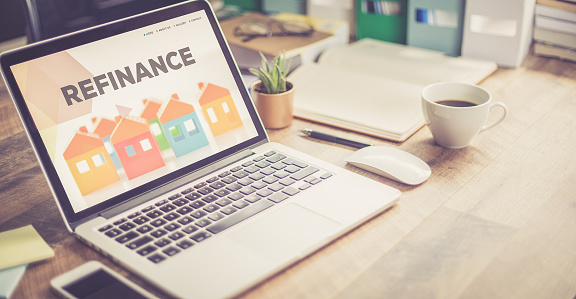What is a Cash-Out refinancing?
Cash-out refinancing replaces your current home loan with a larger mortgage, allowing you to take advantage of the equity you have built in your home and access the difference between the two mortgages (your new and new ones) in cash. Cash can go to almost all purposes, such as home renovation, consolidating high debt or other financial goals.
How Refinance Cash-Out Works
The process for financing cash payments is similar to the level of mortgage-and-term refinancing, where you can simply replace existing loans with new ones for the same amount, usually at a lower interest rate or for shorter loans. The term, or both. In the Cash-Out refinance, you can do the same thing, and also draw part of your house’s equity lump sum.
“Cash-out refinancing is useful if you can reduce the interest rate on your main mortgage and take advantage of the funds you take,” said Greg McBride, CFA, Bankrate financial analyst.
You tend to pay more interest after finishing cash financing because you increase the number of loans, and like other loans, you must pay the closing fee. If not, the steps to do this kind of refinance must be similar to when you get your mortgage first: Send an application after selecting the lender, provide the required documentation and wait for approval, then wait for the closure.
This is the way you can prepare to finance cash again:
1. Determine the minimum requirement of the lender
Mortgage lenders have different qualification requirements for refinancing cash-out, and most have a minimum credit score – the higher, the better. Other typical requirements include a debt-to-income ratio under a certain percentage and at least 20 percent of equity in your home. When you explore your choice, pay attention to what this requirement is.
2. Calculate the amount you need
If you consider cash financing, you may need funds for certain purposes. If you are not sure what it is, it can help to nail it so you borrow only as much as you need. For example, if you plan to use cash to consolidate debt, then collect your personal credit reports or information or information about other debt obligations, and add what you owe. If cash will be used for renovations, consult some contractors to gain estimates for labor and previous material.
3. Prepare your information when you register
After you shop for several lenders to ensure you get the best level and provisions, prepare all your financial information related to your income, assets, and debt for the application. Keep in mind you might need to send additional documentation as lenders evaluate your application.
Examples of how to work in cash financing
Say the rest of the balance on your current mortgage is $ 100,000 and your home is currently worth $ 300,000. In this case, you have $ 200,000 in home equity. Let’s assume that your mortgage refinancing now means you can get a lower interest rate, and you will use cash to renovate your kitchen and bathroom.
Because lenders generally require you to maintain at least 20 percent of equity in your home (although there are exceptions) after cash financing, you must have at least $ 60,000 in home equity, or can borrow up to $ 140,000 in cash. Keep in mind you also need to pay closing fees such as assessment fees, so the final number can be less.
Important points to know about Cash-Out refinancing:
- You cannot tap 100 percent of your equity – most lenders require you to maintain at least 20 percent of equity in your home in financing cash. One exception is a VA refinance cash-out, which allows you to withdraw all your equity.
- You can end up with a very different loan – because you replace the existing mortgage with a new or small business loan, the terms of the loan can change. For example, you may have a higher or lower interest rate (and monthly payment), or a longer or shorter loan period.
- You must have the assessment of your home – Lenders usually require an assessment for conventional cash-out repairs, because the amount you can borrow depends on how much equity you have.
- You will pay the closing fee – as with your first mortgage, the birth of cash-out comes with closure fees, which cover the cost of lenders, assessments and other costs. It is important to consider what can be subject to cash back on you because the cost will not be commensurate, especially if you do not borrow in large quantities.
- Cash will not land in your bank account immediately – the lender is required to give you three days after returning from financing again if you want. For this reason, you have to wait a few days before you receive funds.
